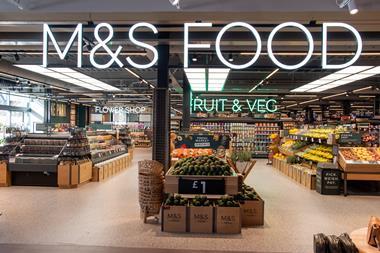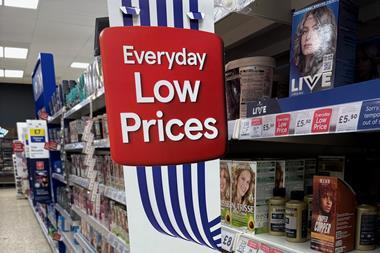
“We’ll go where the customers tell us to go, where the opportunities are.” Those were the words of Peter Filcek, Tesco Marketplace director, when talking about the launch of its new marketplace initiative last week.
The tone of the press release reflects everything I know of the team behind the scheme. It comes across as humble, pragmatic, customer-led, and has an air of ‘let’s not run before we can walk’. LinkedIn posts have interpreted it as a statement of intent from Tesco towards Amazon.
It feels to me quite the opposite. The marketplace seems to be a workaround to the challenging realities of modern retail: you need elasticity and agility in your range to give shoppers what they want, but you don’t have elastic shelves or pick bays.
In the US, they get around this by using middlemen – most major supermarkets don’t deal directly with smaller suppliers.
But it seems Tesco leadership’s hypothesis is that a marketplace model could give them the workaround they need to expand range sufficiently with minimal capital.
It’s early days, but there are two clues in the press release I would be latching onto if I was a brand owner – especially a small brand owner.
The first is the desire for incrementality. This is not about more of the same thing – Tesco will be nervous about cannibalisation of its core range. This is about opening up the selection in a way that allows a giant like Tesco to serve new customer types across new occasions in new ways.
It should enable them to play in new or specialist categories with ease. So, if I was a brand owner with a strong and loyal audience in another channel or tangential category, I would be thinking about how to partner here.
Read more:
-
Tesco’s marketplace boosts SKU count by more than a third
-
My food & drink job: Ru Brown, Pride lead, Tesco
-
Tesco toppling Amazon’s reign isn’t completely bonkers
The second clue is the desire for trust. These products have to be of the highest quality and the seller standards need to be bulletproof, arguably more so than on Amazon.
The pressure for Tesco to rotate stock is somewhat alleviated by the dropship model, which creates opportunities to tell stories through products, be more campaign-led and, in a similar vein to its new Accelerator Scheme, to back new horses. But any brands interested in partnering will no doubt need to demonstrate a watertight product and supply chain standard.
Combine these two objectives with a supply chain model that frankly doesn’t suit big fmcg, and we have ourselves a recipe for challenger brands to enjoy more than their fair share of this new route to market.
The questions now are simply how big, and how quickly? This will determine who can seize this opportunity.
The bulky, high-value launch categories make a lot of sense. Dropship works on a £90 suitcase, but can they expand this beyond the current consumer categories and into traditional fmcg, with the economics adding up for all parties?
If they can’t currently, what’s the workaround? Because if they can crack that code and make it feel seamless for the shopper, the sky may be the limit.



















No comments yet